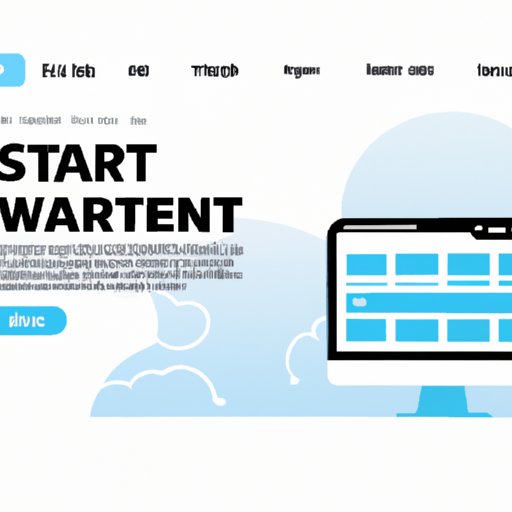Introduction
Having your own website is a great way to showcase your work, services, or products to a broad audience. Whether you’re an entrepreneur, artist, or small business, having an online presence can open up many opportunities and help you reach new customers. But how do you get started? In this article, we will walk through the steps of starting your own website, from researching the basics to promoting your site.

Research the Basics of Building a Website
Before you dive into building a website, it’s important to understand the basics of web development. Knowing the fundamentals will save you time and energy when creating your own site. Learning the basics of web development includes understanding HTML, CSS, and JavaScript. You don’t need to become an expert in these languages, but having a basic grasp of them will help you create a more functional website.
In addition to web development, it’s important to understand the different types of hosting plans and domain names. Web hosting plans determine the speed and security of your website, while domain names are used to create your website’s unique address. Knowing the differences between these two options will help you make a more informed decision when setting up your website.
Choose a Web Hosting Plan
Once you understand the basics of web development and hosting plans, it’s time to choose a plan that’s right for you. When selecting a web hosting plan, consider features, pricing, and customer service. Choose a plan that offers the features you need at a price that fits your budget. Additionally, look for a provider with excellent customer service to ensure you have access to help if you need it.
It’s also important to consider scalability and reliability when selecting a web hosting plan. If you’re expecting a lot of traffic on your website, make sure the plan you select can handle the load. Additionally, look for a plan that offers reliable uptime so your website is always accessible.
Select a Domain Name
Once you’ve chosen a web hosting plan, it’s time to select a domain name. Brainstorm ideas for your domain name that reflect your brand or the purpose of your website. Once you’ve come up with some ideas, check the availability of the domain names on a registrar website. Make sure the domain name you choose is easy to remember and type.

Design and Develop Your Website
Now that you’ve chosen a web hosting plan and domain name, it’s time to start designing and developing your website. First, decide which platform you want to use. Popular options include WordPress, Squarespace, and Wix. Each platform offers different features and usability, so choose one that best meets your needs.
Next, create content for your website. This could include text, images, videos, or any other media you want to feature. Make sure your content is engaging and relevant to your target audience. Finally, optimize your website for search engine optimization (SEO). This will help your website rank higher in search engine results, allowing more people to find your website.
Promote Your Website
Once your website is designed and developed, it’s time to start promoting it. Utilize social media platforms such as Facebook, Twitter, and Instagram to reach a wider audience. Additionally, utilize email campaigns to stay connected with existing and potential customers. Finally, leverage influencers to help spread the word about your website.
Monitor Your Website’s Performance
Once your website is live, it’s important to monitor its performance. Analyze data from Google Analytics or other web analytics tools to gain insights into your website’s visitors, content, and engagement. Use this data to make necessary changes to improve your website’s performance.
Conclusion
Starting your own website can seem like a daunting task, but with the right guidance and research, it doesn’t have to be. Research the basics of web development, choose a web hosting plan, select a domain name, design and develop your website, promote your website, and monitor your website’s performance. By following these steps, you can quickly and easily launch your own website.
(Note: Is this article not meeting your expectations? Do you have knowledge or insights to share? Unlock new opportunities and expand your reach by joining our authors team. Click Registration to join us and share your expertise with our readers.)
